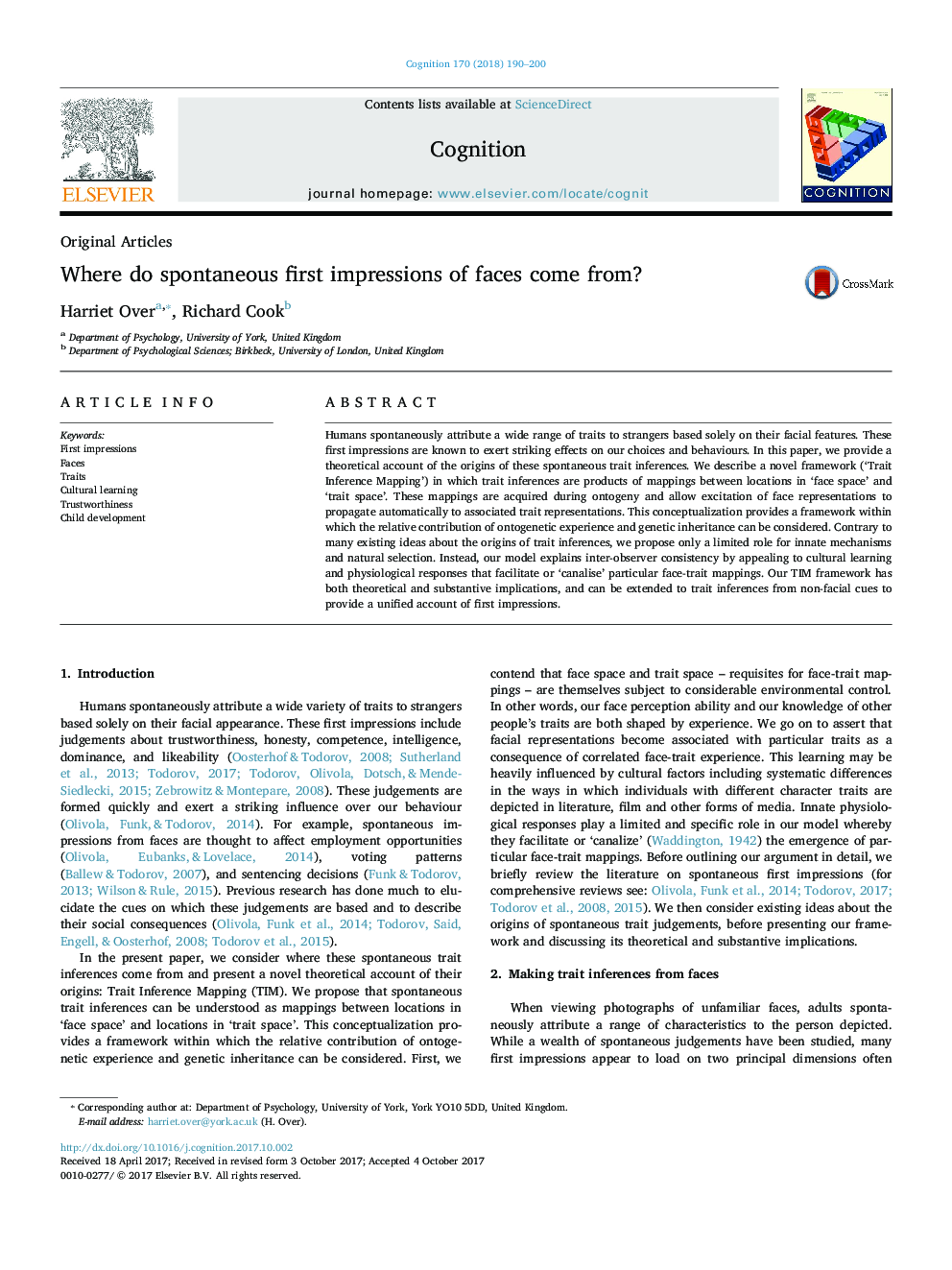| Article ID | Journal | Published Year | Pages | File Type |
|---|---|---|---|---|
| 5041412 | Cognition | 2018 | 11 Pages |
Humans spontaneously attribute a wide range of traits to strangers based solely on their facial features. These first impressions are known to exert striking effects on our choices and behaviours. In this paper, we provide a theoretical account of the origins of these spontaneous trait inferences. We describe a novel framework ('Trait Inference Mapping') in which trait inferences are products of mappings between locations in 'face space' and 'trait space'. These mappings are acquired during ontogeny and allow excitation of face representations to propagate automatically to associated trait representations. This conceptualization provides a framework within which the relative contribution of ontogenetic experience and genetic inheritance can be considered. Contrary to many existing ideas about the origins of trait inferences, we propose only a limited role for innate mechanisms and natural selection. Instead, our model explains inter-observer consistency by appealing to cultural learning and physiological responses that facilitate or 'canalise' particular face-trait mappings. Our TIM framework has both theoretical and substantive implications, and can be extended to trait inferences from non-facial cues to provide a unified account of first impressions.
